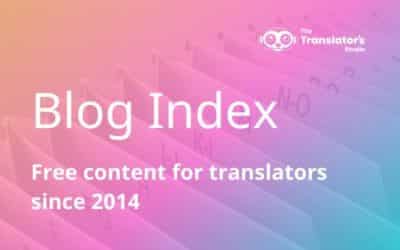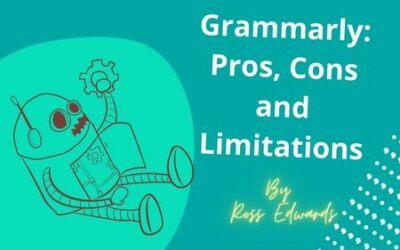SEO translators are in increasing demand among translation clients in this digital age. So, how can you train to become one?
After reading Lucy’s article “How SEO Translators Can Help You Get More Website Traffic”, I wanted to write this short article to offer guidance to translators wishing to specialise in search engine optimization (SEO). Below, I’ll tell you about the training path I followed to become a specialist in SEO.
1. Marketing training
Marketing translation has always been one of my favourite areas. Since starting my career as a freelance translator in 2009, I’ve continually updated my marketing knowledge. I do this primarily to run The Translator’s Studio but also to help me sell my translation services. For me, this training mostly consists of reading books and blogs on a periodic basis.
If I see a course, video or online training session that looks interesting to me, then I attend. I also follow numerous podcasts from the marketing world. It’s really helpful to listen to successful marketing professionals and pick up hints from them. Part of this training involves doing CPD on the world of SEO.
2. Copywriting training
Training as a copywriter is an essential part of being an SEO translator. Search engine optimization is only part of the translation you’re going to produce. You have to understand the different types of marketing texts and the techniques for writing them. That way, you can identify what the source writer is doing, and try to reproduce it. Or find an equivalent technique in the translation. An interesting part of marketing writing is that you can break rules. That’s something that doesn’t come easy to translators, who tend to be real sticklers for language discipline. That’s why you’ll find devices like sentence fragments on our blog. This is something I’d never encourage our translation students to do if they’re preparing for an exam.
Discover how to create your own training path to becoming an SEO #translator Share on XThe initial course I followed back in 2017 (CMP copywriting course) covered different types of copywriting. It included a couple of modules on SEO copywriting, which were interesting. Lucy Williams and I took the course together, and we did feedback for each other before we sent it to the tutor for grading. We also bought books and found articles online. This way we supplemented the manuals and tutor feedback, both of which were a tad sparse.
It was great to do the course together because it gave us chance to discuss everything we’d read. Reading widely allowed us to explore different approaches and opinions. For instance, it was interesting to get different expert perspectives on SEO copywriting, which weren’t always the same.
3. SEO training
Start by learning the basics of SEO and how to write for the web. That way you can use SEO copywriting techniques when you translate. That may be all you need. Perhaps all the client wants is for you to translate the text while being mindful of the keywords they’ve already identified.
The next step in your SEO training is to dig more deeply into the topic, which can get very technical. There are numerous facets to SEO, from making sure site design is optimised during website development, to learning how to identify keywords and implement an SEO strategy. There’s a lot of ongoing monitoring involved: gathering data, analysing it and then designing and implementing new strategies. It’s a never-ending circular process.
Topics I’ve studied include learning how to use Google Analytics, Google Adwords and Google Tag Manager. On top of this I’ve investigated and used a range of SEO software. I started by using the free Google training and subscribing to Lynda.com. As I progressed, I invested in more specialist training run by SEO specialists. As an SEO translator, you don’t necessarily need to do any of this. But having a global understanding of what’s involved in SEO will help you do your job better. You can also implement everything you learn in your own translation business.
And there you have the triangle that forms the basis of being an SEO translator. This, of course, assumes you’re already a qualified translator. If you’re not, you may like to check out our translation courses and workshops and do your free level test.





0 Comments